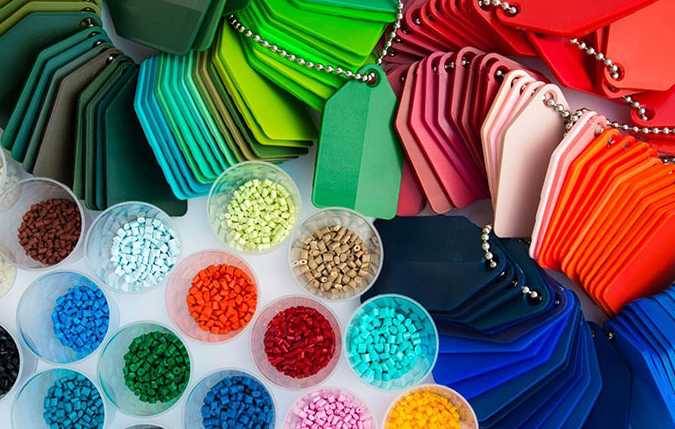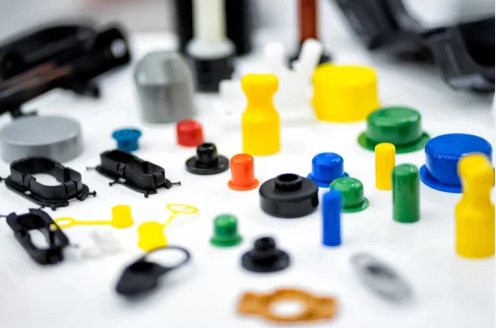Several key factors impacting part quality in injection molding include material choice, mold design, process control, and quality testing.
Material Selection and Properties
Impact of Material Type on Final Product Quality
The choice of material in injection molding significantly influences the final product’s quality. Materials like ABS, polypropylene, and polycarbonate offer different balances of strength, flexibility, and heat resistance. For instance, ABS is renowned for its toughness and impact resistance, making it ideal for durable parts, while polypropylene offers excellent chemical resistance and flexibility. Material selection directly impacts the product’s application suitability, lifespan, and overall performance. Choosing the right material can also affect the molding process’s efficiency; certain plastics require lower molding temperatures, reducing energy consumption and cycle times.

Importance of Material Consistency and Purity
Consistency and purity of the material are crucial for high-quality injection molding. Variations in material properties, like viscosity or moisture content, can lead to defects in the final product. For example, a fluctuation in viscosity can cause inconsistent filling of the mold, leading to warping or voids in the part. Maintaining a consistent material quality ensures uniformity in production and reduces the rejection rate of parts. Using high-grade, pure materials can sometimes increase the cost but is essential for applications where precision and reliability are critical. Additionally, impurities in materials can cause degradation during the molding process, impacting the part’s structural integrity and aesthetic appeal.
For additional information on this topic, the Injection Molding Materials page on Wikipedia provides comprehensive insights.
Mold Design and Precision
Influence of Mold Quality on Part Accuracy
The quality of a mold in injection molding is pivotal for part accuracy. High-precision molds, often with tolerances as tight as ±0.001 inches, are crucial for ensuring dimensional accuracy. For instance, using high-grade steel molds can increase the accuracy by up to 40% compared to standard molds. These molds, though costlier (with price increases up to 25-30% more than standard molds), offer better longevity and precision. They can withstand up to a million cycles, while aluminum molds, cheaper by about 20%, might only last for 100,000 to 200,000 cycles. The precision of the mold directly influences the part’s dimensional accuracy, surface finish, and feature consistency, which are essential for complex and critical applications.
Role of Mold Maintenance in Consistent Quality Production
Effective mold maintenance plays a significant role in ensuring consistent quality. Routine maintenance can extend mold life by up to 30%, directly impacting production efficiency. Regular tasks include cleaning, lubrication, and damage repair. For example, a well-maintained mold is less likely to produce defects like flash, which can occur in up to 10% of parts from poorly maintained molds. Scheduled maintenance, despite its upfront time cost, reduces the risk of prolonged downtimes, which can increase by up to 15-20% with neglected care. It also ensures a steady output of high-quality parts, avoiding the costs and delays associated with producing and reworking defective items.
For additional details on mold design and care, the Injection Molding Mold Design page on Wikipedia is a valuable resource.
Injection Molding Process Parameters
Effects of Injection Pressure and Speed on Quality
| Parameter | Description | Impact on Quality | Optimal Range |
|---|---|---|---|
| Injection Pressure | Force applied to push molten plastic into the mold. | High pressure ensures uniform filling, reducing defects like air pockets. | Typically between 10,000 to 20,000 psi. |
| Injection Speed | Speed at which plastic is injected into the mold. | Faster speeds can improve cycle time but may cause turbulence and air entrapment. | Varies with material, generally 1 to 5 inches/sec. |
Significance of Temperature Control in Molding Process
| Aspect | Description | Impact on Quality | Optimal Range |
|---|---|---|---|
| Melt Temperature | Temperature of plastic before injection. | Too high can degrade material; too low may cause incomplete filling. | Ranges from 400°F to 550°F for most plastics. |
| Mold Temperature | Temperature of the mold during injection. | Influences part cooling rate, affecting dimensional stability and surface finish. | Generally 68°F to 572°F, depending on material. |
For more insights, the Injection Molding Process Parameters page on Wikipedia offers comprehensive information.
Quality Control and Testing
Implementation of Quality Assurance Protocols
Quality assurance in injection molding involves a systematic approach to ensuring part quality. Regular audits and adherence to standards like ISO 9001 can improve product quality by up to 40%. Key protocols include:

Staff Training: Ensuring all operators are trained in quality control practices.
Preventive Maintenance: Regular equipment checks to prevent defects.
Advanced Testing Methods for Ensuring Part Integrity
Utilizing advanced testing methods is crucial for verifying part integrity. Techniques like 3D scanning can detect dimensional inaccuracies within 0.0005 inches. Common testing methods include:
Tensile Testing: Measures the strength of a part, essential for load-bearing components.
Impact Resistance Test: Assesses how a part behaves under sudden force.
Thermal Analysis: Evaluates how parts perform under various temperature conditions.
Effective quality control and advanced testing are vital for maintaining high standards in injection molding. They not only ensure the reliability of the final product but also contribute to minimizing waste and improving overall efficiency. For more information, the Injection Molding Quality Control page on Wikipedia provides in-depth knowledge on this topic.




